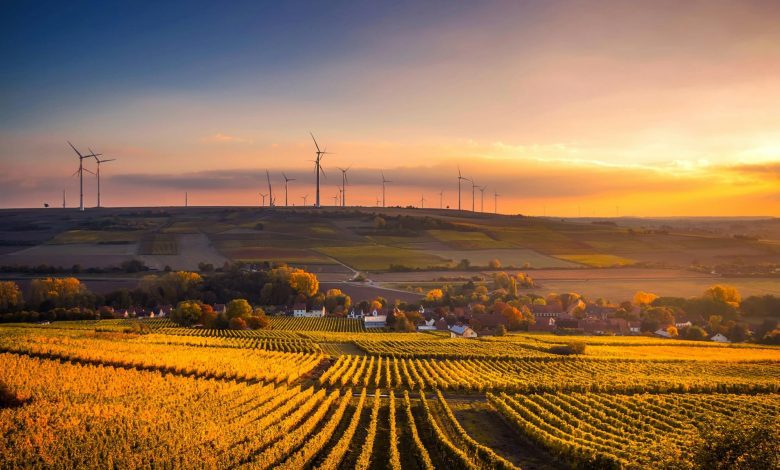Exploring Permaculture Principles for Sustainable Farmnig

Permaculture is an innovative and sustainable approach to farming that aims to mimic natural ecosystems and create a harmonious coexistence between humans and the environment. The word “permaculture” itself is a combination of “permanent” and “agriculture,” emphasizing the long-term sustainability of this farming practice. By implementing permaculture principles, farmers can reduce their environmental impact while maximizing the productivity of their land.
The Foundation of Permaculture Farming
Permaculture farming is based on three core principles: care for the Earth, care for people, and fair share. These principles guide every decision made on a permaculture farm, from the choice of crops to the management of resources. By prioritizing the health of the soil, water, and biodiversity, permaculture farmers work towards creating a resilient and self-sustaining system.
One fundamental aspect of permaculture farming is the use of organic and regenerative practices. Chemical fertilizers and pesticides are replaced with natural alternatives, such as compost and biological pest control. This not only protects the environment but also produces healthier and more nutritious crops.
Applying Permaculture Principles to Agriculture
Permaculture principles can be applied to all types of agriculture, from small-scale backyard gardens to large commercial farms. The key is to observe and understand the natural patterns and processes in the ecosystem and integrate them into the farming system.
Permaculture design focuses on creating efficient and productive systems by utilizing companion planting, crop rotation, and water conservation techniques. For example, planting nitrogen-fixing legumes alongside other crops helps improve soil fertility while reducing the need for synthetic fertilizers. Similarly, rotating crops in a specific sequence prevents the build-up of pests and diseases, reducing the reliance on chemical pesticides.
Designing a Permaculture Garden
Creating a permaculture garden involves careful planning and design. The goal is to create a self-sustaining ecosystem that requires minimal inputs while maximizing yield. Key elements of a permaculture garden include diverse plantings, water catchment systems, and the use of natural materials.
In a permaculture garden, plant diversity is crucial. By incorporating a wide variety of plants, including fruit trees, vegetables, and herbs, farmers can increase biodiversity and attract beneficial insects and pollinators. This leads to a healthier ecosystem and reduces the risk of pest outbreaks.
The Importance of Plant Diversity in Permaculture Farming
Plant diversity plays a vital role in permaculture farming. By planting a wide variety of crops, farmers can create a resilient and balanced ecosystem that is less susceptible to pests and diseases. Additionally, diverse plantings promote soil health by enhancing nutrient cycling and reducing soil erosion.
In permaculture farming, companion planting is often used to maximize the benefits of plant diversity. Certain plants have natural pest-repellent properties or attract beneficial insects that prey on pests. For example, planting marigolds alongside tomatoes can deter nematodes, while attracting bees and other pollinators.
Adapting Permaculture Principles to Different Climates
Permaculture principles can be adapted to different climates, making it a versatile farming practice worldwide. The key is to work with the natural conditions and adapt the farming techniques accordingly.
In hotter climates, shade trees can be strategically planted to provide relief from the scorching sun and create microclimates that support the growth of more delicate crops. Water conservation techniques, such as drip irrigation and mulching, are also crucial in arid regions.
On the other hand, in colder climates, permaculture farmers can utilize techniques like windbreaks and hoop houses to protect crops from harsh winds and extend the growing season. Cold-tolerant crops and cover crops can also be selected to ensure a year-round harvest.
The Role of Feminized Plants in Permaculture Farming
Feminized plants, also known as female-only plants, have been gaining popularity in permaculture farming. These plants are genetically modified to produce only female flowers, eliminating the need for manual removal of male flowers to prevent pollination.
By using feminized plants, permaculture farmers can focus their resources and energy on cultivating high-quality crops without the risk of unwanted cross-pollination. This is particularly beneficial for seed-saving and ensuring the genetic purity of heirloom varieties.
However, it is important to note that the use of feminized plants should be approached with caution, as it involves genetic modification. Farmers should carefully consider the potential ecological and health impacts before incorporating feminized plants into their farming practices.
The Latest Research in Permaculture Farming
Permaculture farming is a continuously evolving field, with ongoing research aimed at improving its practices and expanding its applications. Scientists and farmers are collaborating to explore innovative techniques and technologies that can further enhance the sustainability and productivity of permaculture systems.
Recent research has focused on topics such as soil health, carbon sequestration, and agroforestry in permaculture farming. Studies have shown that well-managed permaculture farms can significantly increase soil organic matter, enhance biodiversity, and mitigate climate change by sequestering carbon dioxide from the atmosphere.
Permaculture Principles for Cannabis Farming
Permaculture is a sustainable farming technique that involves working with natural systems rather than against them. It’s a holistic approach that aims to create a self-sustaining ecosystem that benefits both the environment and the farmer. By embracing permaculture principles, farmers can reduce their environmental impact and increase their yields while fostering a healthier ecosystem. Exploring permaculture principles is essential for sustainable farming, and it’s a trend that is gaining traction all over the world.
One of the key principles of permaculture is diversity. By planting a diverse range of crops, farmers can create a resilient ecosystem that is less susceptible to disease and pests. Additionally, permaculture encourages the use of natural fertilizers and pest control methods, which reduces the need for harmful chemicals that can damage the environment and harm wildlife. Through permaculture practices, farmers can create a self-sustaining ecosystem that benefits everyone.
When it comes to sustainable farming, permaculture is an excellent choice. It’s a technique that is gaining popularity all over the world, and for good reason. By embracing permaculture principles, farmers can create a healthier, more sustainable, and more profitable farming system. And with the growing interest in cannabis cultivation, permaculture principles are becoming more important than ever. Whether you’re growing cannabis or other crops, exploring permaculture principles is an excellent way to ensure a sustainable and profitable farming operation. And if you’re looking for high-quality cannabis seeds, be sure to check out cannabis seeds usa | growers choice seeds for a wide selection of top-quality strains.
Resources for Learning More about Permaculture Principles
For those interested in delving deeper into permaculture principles and practices, there are numerous resources available. Books, online courses, and workshops offer valuable insights and guidance for aspiring permaculture farmers. Some recommended resources include:
- “Introduction to Permaculture” by Bill Mollison and Reny Mia Slay
- “Gaia’s Garden: A Guide to Home-Scale Permaculture” by Toby Hemenway
- Permaculture Design Courses offered by various organizations and institutions
- Permaculture forums and online communities for sharing experiences and knowledge
By immersing oneself in the wealth of information and learning from experienced permaculture practitioners, individuals can gain the knowledge and skills needed to implement permaculture principles effectively.
Conclusion
Permaculture principles offer a sustainable and holistic approach to farming that promotes environmental stewardship, biodiversity, and resilience. By adopting these principles, farmers can create self-sustaining ecosystems that provide abundant harvests while minimizing their impact on the environment.
From designing permaculture gardens to adapting to different climates, there are endless possibilities for applying permaculture principles in agriculture. The role of feminized plants and ongoing research further contribute to the advancement of this innovative farming practice.
For more informative articles keep visiting the posting zone.




